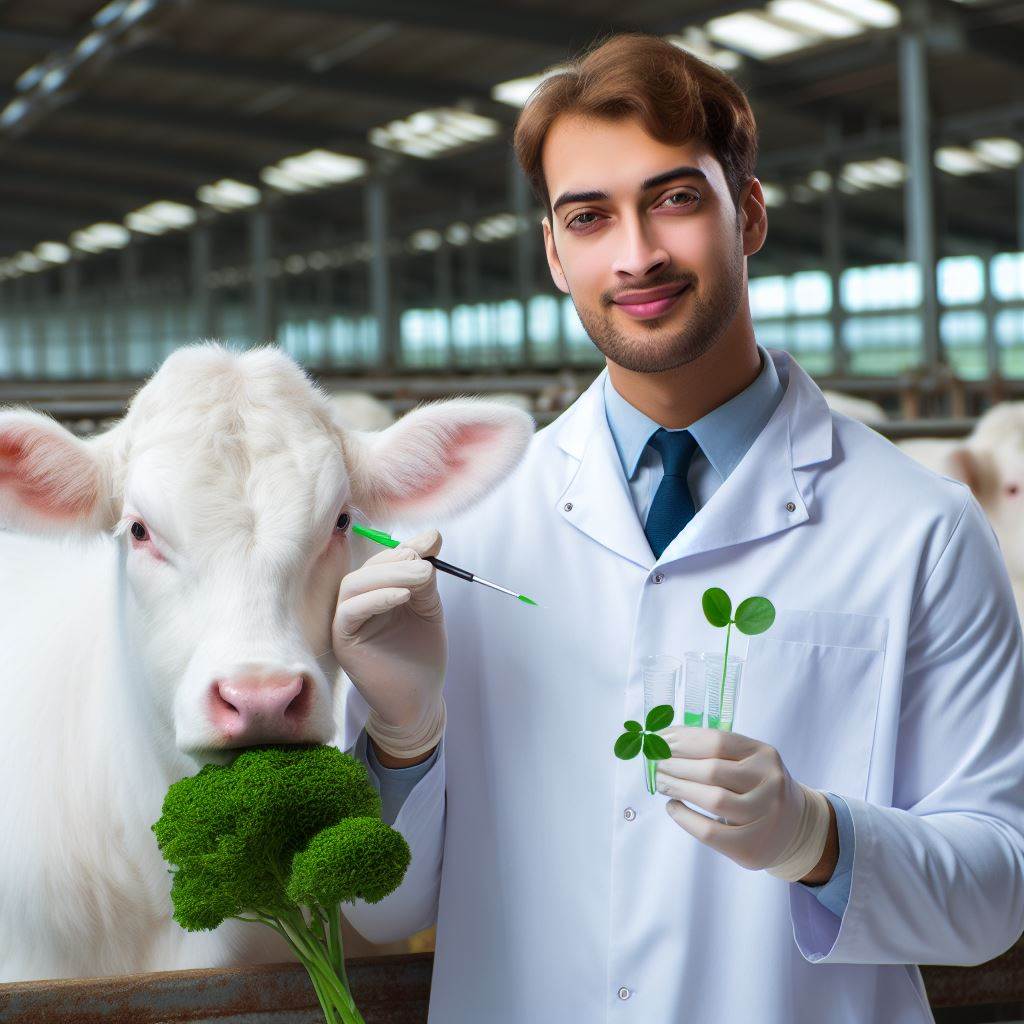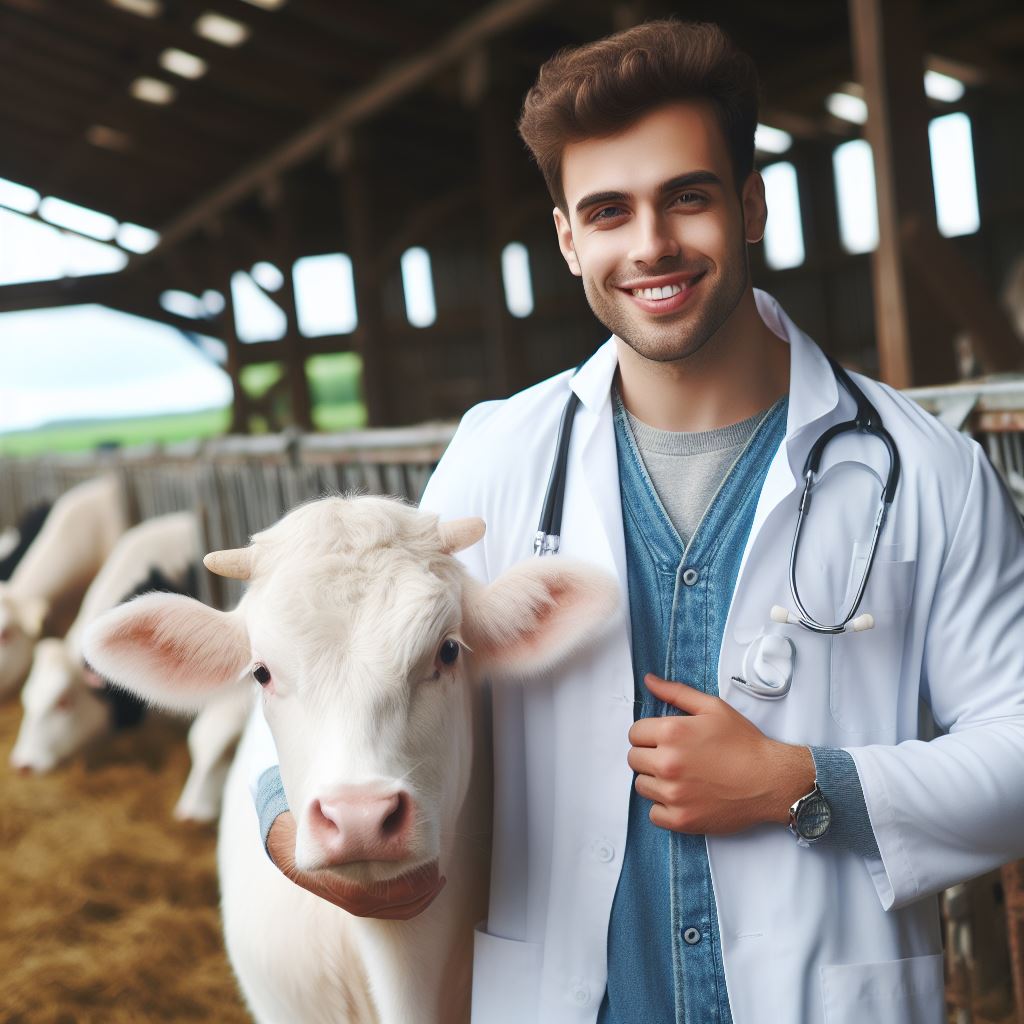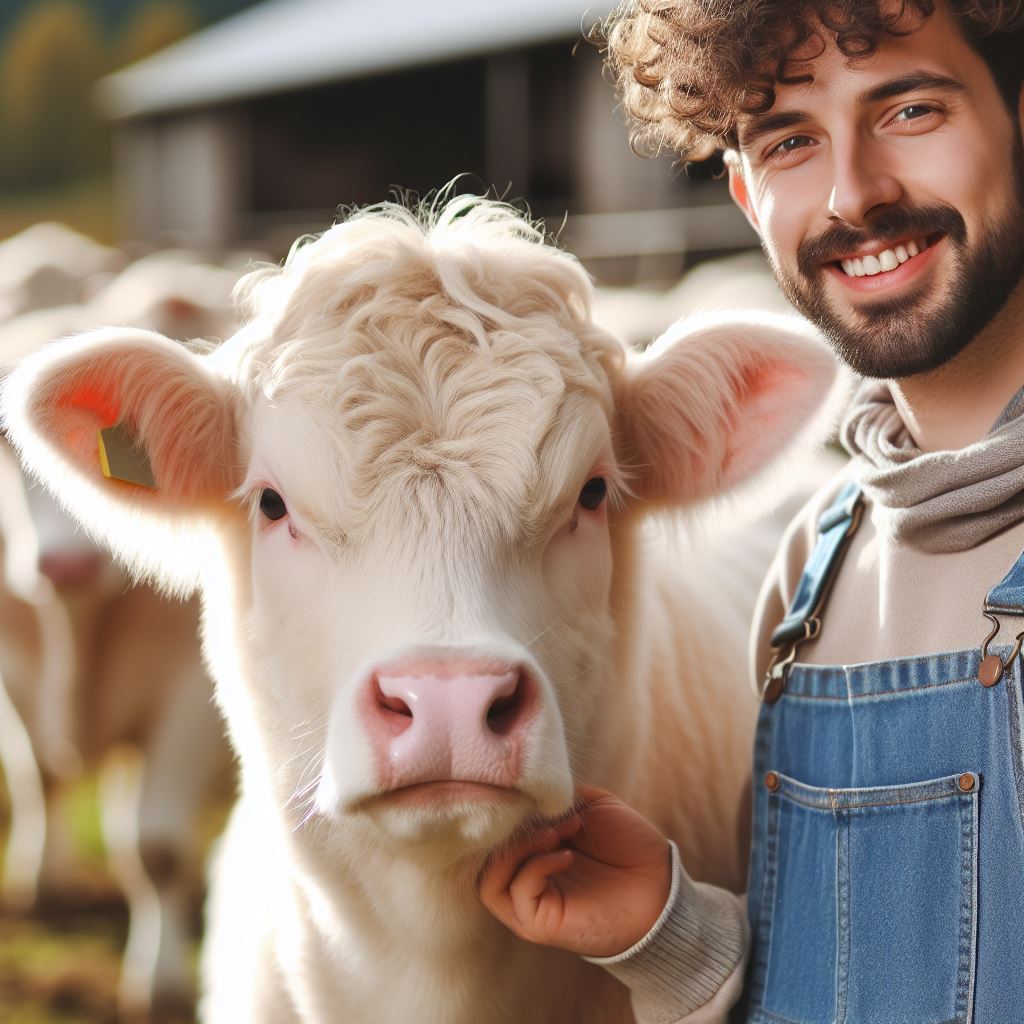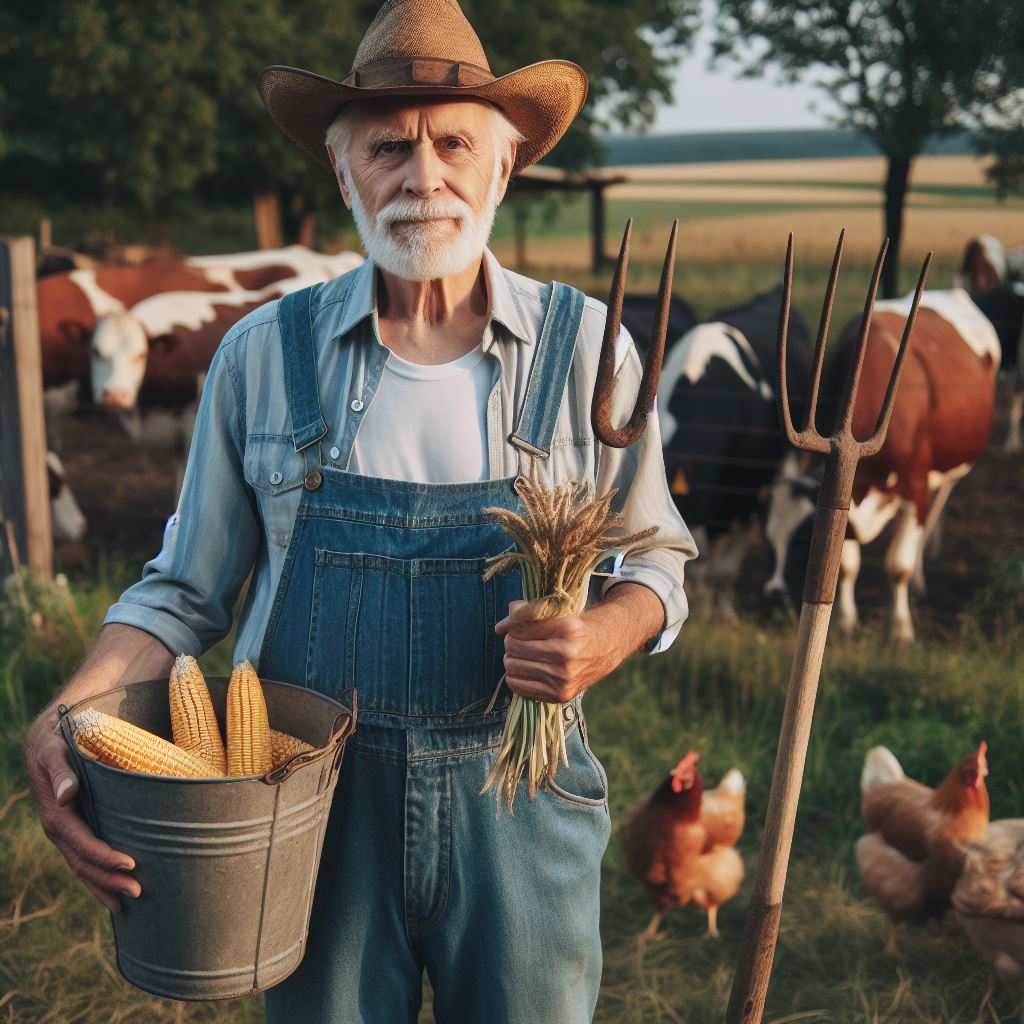Introduction
Green livestock breeding practices are crucial in promoting sustainability and environmental conservation within the agricultural industry.
Livestock breeding plays a significant role in meeting the increasing global demand for animal products.
However, traditional breeding practices often have negative impacts on the environment, such as deforestation, greenhouse gas emissions, and water pollution.
Green livestock breeding practices aim to address these issues by focusing on sustainable and environmentally friendly methods.
These practices involve the use of renewable energy sources, land management techniques that minimize environmental degradation, and responsible waste management strategies.
By adopting green livestock breeding practices, farmers can reduce their carbon footprint and contribute to the preservation of natural resources.
This section will explore various green breeding practices, their benefits, and the challenges faced in their implementation.
The goal is to promote a more sustainable approach to livestock breeding that balances the need for food production with environmental preservation.
Overview of Green Livestock Breeding Practices
Definition and concept
Green livestock breeding practices refer to environmentally-friendly methods utilized in the breeding and raising of livestock.
These practices aim to minimize negative impacts on the environment while ensuring the sustainability of the livestock industry.
Implementing sustainable practices not only benefits the environment but also offers numerous advantages for farmers and consumers alike.
By adopting green livestock breeding practices, farmers can reduce pollution, conserve natural resources, and improve the overall health and welfare of their livestock.
Benefits of implementing sustainable practices
- Environmental preservation: Green livestock breeding practices help minimize environmental pollution and degradation. By reducing the use of harmful chemicals, managing waste properly, and conserving water and energy, these practices contribute to the preservation of ecosystems.
- Conservation of natural resources: Implementing sustainable practices in livestock breeding reduces the demand for natural resources such as water and land. By optimizing resource utilization, farmers can ensure the longevity and availability of essential resources for future generations.
- Enhanced animal welfare: Green breeding practices prioritize the well-being of animals. Providing them with proper nutrition, comfortable housing, and access to outdoor areas promotes better animal health and reduces stress, leading to improved productivity and higher-quality products.
- Improved food safety: Sustainable livestock breeding practices focus on producing safe and nutritious food. By implementing strict hygiene measures and using organic methods, the risk of contamination and the use of harmful chemicals in food production are minimized.
Examples of green livestock breeding practices
- Organic feeding: Farmers can reduce the use of synthetic fertilizers and pesticides by utilizing organic feeds made from naturally grown crops. This not only benefits the environment but also improves the nutritional quality of the animal products.
- Pasture-based systems: Allowing livestock to graze on natural pasture reduces the reliance on intensive feed production and promotes sustainable land management. This practice improves soil fertility, reduces erosion, and sequesters carbon, contributing to climate change mitigation.
- Genetic selection for resilience: Breeding animals with traits that allow them to adapt to changing environmental conditions improves their resilience. These animals require less medication, resulting in decreased use of antibiotics, which contributes to reducing the risk of antibiotic resistance.
- Manure management: Implementing proper manure management techniques, such as composting and anaerobic digestion, helps reduce greenhouse gas emissions, prevent water pollution, and recycles nutrients as organic fertilizers.
- Renewable energy utilization: Integrating renewable energy sources, such as solar panels or wind turbines, into livestock operations helps reduce energy consumption and dependency on fossil fuels, lowering greenhouse gas emissions.
In short, green livestock breeding practices play a vital role in ensuring the sustainability and environmental responsibility of the livestock industry.
By adopting these practices, farmers can contribute to mitigating climate change, preserving natural resources, and producing high-quality, safe food for consumers.
Read: Livestock Waste Management 101
Transform Your Agribusiness
Unlock your farm's potential with expert advice tailored to your needs. Get actionable steps that drive real results.
Get StartedSustainable Feeding Strategies
Utilizing locally-sourced and sustainable feed
Locally-sourced feed not only reduces transportation emissions but also supports local agriculture.
Using sustainable feed helps minimize the harmful impact of conventional agriculture on the environment.
Sourcing feed locally also ensures the freshness and quality of the feed, which is beneficial for livestock.
By supporting local farmers, the livestock industry can contribute to the local economy and promote sustainable practices.
Reducing reliance on soy and corn-based feed
The widespread use of soy and corn-based feed has led to deforestation and excessive water usage.
Finding alternative feed options can reduce the environmental impact associated with soy and corn production.
Reducing reliance on these feeds also helps decrease the carbon footprint of the livestock industry.
Exploring alternative feed options can promote biodiversity and improve soil health.
Incorporating alternative protein sources
Using alternative protein sources, such as insect-based or algae-based feed, can reduce environmental degradation.
Insects and algae have a high protein content and can be produced sustainably with minimal environmental impact.
Incorporating these alternative protein sources in livestock feed can also reduce reliance on traditional feed sources.
Research has shown that insect-based feed can improve feed conversion ratios and enhance animal health.
Minimizing food waste in livestock feeding
Minimizing food waste in livestock feeding is crucial for achieving sustainable livestock breeding practices.
Implementing efficient feeding methods and monitoring feed utilization can help reduce food waste.
By reducing food waste, the livestock industry can contribute to minimizing greenhouse gas emissions.
Optimizing feed management practices can also lead to cost savings for farmers and improve overall operational efficiency.
In fact, sustainable feeding strategies play a vital role in green livestock breeding practices.
Utilizing locally-sourced and sustainable feed supports local agriculture, reduces environmental impact, and promotes the local economy.
Reducing reliance on soy and corn-based feed helps protect forests, conserve water, and decrease carbon emissions.
Incorporating alternative protein sources like insects and algae can improve feed conversion ratios and reduce environmental degradation.
Minimizing food waste in livestock feeding not only promotes sustainable practices but also improves operational efficiency and reduces greenhouse gas emissions.
Adopting these strategies can help create a more sustainable and environmentally-friendly future for livestock breeding.
Read: Rotational Grazing: Benefits & Tips
Improving Animal Health and Welfare
Achieving green livestock breeding practices involves ensuring the well-being and good health of animals.
Showcase Your Farming Business
Publish your professional farming services profile on our blog for a one-time fee of $200 and reach a dedicated audience of farmers and agribusiness owners.
Publish Your ProfileImplementing a range of strategies can greatly contribute to this goal:
Implementing natural remedies and medicine
- Explore alternative treatments such as herbal remedies and homeopathy to reduce reliance on synthetic drugs.
- Use natural remedies, like essential oils, to treat common ailments such as respiratory infections or skin issues.
- Seek guidance from holistic veterinarians who specialize in natural healing methods.
- Regularly assess and monitor the effectiveness of these natural remedies to constantly improve animal health.
Providing a stress-free environment
- Create spacious and comfortable living conditions that allow animals to move freely and exhibit natural behaviors.
- Properly ventilate barns and provide adequate lighting to reduce stress and promote well-being.
- Limit exposure to loud noises and sudden changes in the environment as they can cause stress and anxiety.
- Encourage social interaction among animals, allowing them to form natural hierarchies and reduce aggression.
Encouraging exercise and natural behavior
- Design animal enclosures that enable movement, exercise, and the expression of natural behaviors.
- Provide animals with access to pasture, allowing them to graze and exhibit natural grazing patterns.
- Create enriching environments with toys and activities that stimulate natural instincts, combating boredom.
- Promote the use of free-range systems, allowing animals to engage in natural behaviors and improve their overall well-being.
Reducing antibiotic usage and implementing preventive measures
- Adopt strict biosecurity measures to prevent the introduction and spread of infectious diseases.
- Focus on improving overall animal health through nutrition, breeding selection, and vaccination programs.
- Develop tailored preventive medicine programs to address specific health concerns for different livestock species.
- Regularly monitor and assess animal health to identify potential issues before they escalate.
By following these strategies, livestock breeders can not only improve animal health and welfare but also contribute to a more sustainable and eco-friendly industry.
Read: Guide to Sustainable Animal Shelters
Sustainable Waste Management
One crucial element of green livestock breeding practices is the implementation of sustainable waste management techniques.
Proper management of livestock waste helps in minimizing environmental impact and pollution risks.
It presents opportunities to utilize waste for other beneficial purposes.
Proper manure management techniques
- Implementing a well-designed manure management system is essential for minimizing the environmental and health risks associated with livestock waste.
- This includes proper storage, handling, and treatment methods to prevent water and air pollution.
- Regular monitoring and maintenance of manure storage facilities and equipment should be conducted.
- Applying manure at appropriate rates and times in coordination with crop nutrient requirements optimize its utilization.
- Utilizing tools such as manure management plans and nutrient management plans can aid in effective waste management.
Utilizing manure for biogas or composting
- One sustainable approach to managing livestock waste involves using it as a resource for biogas production.
- An anaerobic digestion system can convert manure into biogas, which can then generate renewable energy.
- This process not only reduces methane emissions but also provides a source of clean energy for various applications.
- Composting is another option where manure is converted into nutrient-rich compost for soil amendment.
- This helps in enhancing soil fertility while diverting organic waste from landfills.
Reducing environmental impact and pollution risks
- By implementing sustainable waste management practices, livestock farmers can significantly reduce the negative environmental impacts caused by their operations.
- Preventing nutrient and pathogen runoff into water bodies is crucial for maintaining water quality and aquatic ecosystems.
- Appropriate manure application techniques, such as injection or incorporation, help minimize nutrient leaching and runoff.
- Proper storage and treatment of manure reduce the release of harmful gases, odors, and pathogens into the air.
- By controlling these aspects, pollution risks can be mitigated, safeguarding both human and environmental health.
Exploring innovative waste management solutions
- To further enhance sustainable waste management in livestock breeding, it is essential to explore innovative solutions.
- Emerging technologies like precision feeding systems aim to optimize nutrient utilization and reduce waste production.
- These systems precisely regulate the amount and composition of feed provided to livestock, minimizing excess nutrient excretion.
- Additionally, implementing nutrient recovery technologies can help extract valuable resources from livestock waste.
- These technologies focus on capturing and reusing nutrients, reducing the reliance on conventional fertilizers.
In general, sustainable waste management practices play a vital role in green livestock breeding.
Proper manure management, utilization for biogas or composting, and reducing pollution risks are crucial.
It is also necessary to explore innovative solutions that further enhance waste management and resource recovery.
Read: Water Saving in Animal Farming

Water Conservation Practices
Efficient water usage in livestock operations
- Livestock breeding practices should prioritize efficient water usage to conserve this valuable resource.
- Implementing water-efficient technologies and practices can greatly reduce water consumption in livestock operations.
- This includes using low-flow watering systems, drip irrigation, and water-saving equipment in animal housing facilities.
- Regular maintenance of water delivery systems to ensure there are no leaks or wastage.
- Proper management of water troughs and tanks to avoid unnecessary spillage or contamination.
Collecting and recycling water
- Collecting and recycling water can help minimize the overall water demand in livestock breeding practices.
- Installing rainwater harvesting systems to collect precipitation for later use in watering livestock.
- Treating and reusing wastewater from livestock operations for non-potable purposes such as irrigation.
- Implementing water storage systems to capture and store excess water for future use.
- Using water-efficient cleaning methods to reduce water usage when cleaning animal housing facilities.
Preservation of water sources on farms
- Preserving natural water sources on farms is crucial for sustainable livestock breeding practices.
- Protecting and maintaining streams, ponds, and wetlands can help ensure a reliable water supply for animals.
- Implementing riparian buffer zones to prevent runoff and soil erosion, which can contaminate water sources.
- Proper land management practices such as rotational grazing to prevent overgrazing and soil degradation.
- Conserving and replenishing groundwater through judicious use and recharging techniques like cover cropping.
Monitoring and managing water quality
- Monitoring and managing water quality is essential to ensure the health and well-being of livestock.
- Regular water testing to detect any potential contaminants or pollutants that may affect animal health.
- Implementing water treatment systems to remove harmful bacteria, sediments, and excessive nutrient content.
- Educating livestock breeders about the importance of water quality and providing guidelines for proper management.
- Working closely with regulatory agencies to ensure compliance with water quality standards and regulations.
Implementing Renewable Energy Sources
Utilizing solar energy for powering farms
- Solar panels can be installed on farm buildings to generate electricity.
- This renewable energy source can power various farming equipment and facilities.
- Solar power reduces reliance on non-renewable energy sources and decreases carbon emissions.
- Investing in solar energy systems can result in long-term cost savings for livestock farmers.
- The use of solar energy contributes to a greener and more sustainable livestock breeding practice.
Exploring wind energy options
- Wind turbines have the potential to generate clean and renewable energy for livestock operations.
- Choosing suitable locations for wind turbines is crucial to maximize energy production.
- Wind energy can provide sustainable power to farms, reducing dependence on fossil fuel.
- By harnessing wind energy, farmers can contribute to the preservation of the environment.
- Implementing wind energy technologies demonstrates a commitment to sustainable livestock breeding practices.
Benefits of renewable energy adoption in livestock operations
- Reduces greenhouse gas emissions, combating climate change and global warming.
- Improves air quality and reduces pollution, creating healthier environments for both animals and humans.
- Decreases reliance on non-renewable energy sources, conserving natural resources.
- Mitigates the impact of rising energy costs, providing long-term financial benefits.
- Enhances the reputation of livestock farmers as sustainable and responsible stewards of the environment.
- Supports the transition to a cleaner, greener, and more eco-friendly livestock industry.
In review, the adoption of renewable energy sources in livestock operations, such as solar and wind energy, offers numerous benefits.
By utilizing solar energy, farms can reduce reliance on non-renewable resources, decrease carbon emissions, and achieve long-term cost savings.
Exploring wind energy options provides the opportunity to generate clean power and contribute to environmental preservation.
Implementing renewable energy technologies demonstrates a commitment to sustainable practices, improves air quality, mitigates energy costs, and fosters a greener livestock breeding industry.
Collaboration with Sustainable Suppliers
Importance of working with sustainable feed and equipment suppliers
- Collaborating with sustainable suppliers is crucial for promoting green livestock breeding practices.
- Sustainable suppliers provide eco-friendly feed options, reducing the environmental footprint of livestock farming.
- Using sustainable equipment suppliers ensures the use of energy-efficient and environmentally friendly tools in livestock production.
- Choosing sustainable suppliers helps in reducing waste generation and minimizing the negative impact on natural resources.
- Working with sustainable suppliers aligns with the goal of improving the overall sustainability of livestock breeding practices.
Ensuring transparency and traceability in the supply chain
- Transparency in the supply chain allows for a clear understanding of where the feed and equipment come from.
- By ensuring traceability, livestock breeders can verify the sustainable practices implemented by suppliers.
- Traceability helps identify any potential environmental or ethical issues in the supply chain, enabling prompt action.
- Knowing the origin of feed and equipment ensures compliance with eco-friendly standards and certifications.
- Establishing transparency and traceability builds trust among consumers and stakeholders.
Supporting local and eco-friendly businesses
- Collaborating with local suppliers reduces transportation emissions and supports the local economy.
- Choosing eco-friendly businesses promotes the use of sustainable materials and practices in livestock breeding.
- Supporting local businesses helps create a sense of community and strengthens relationships within the supply chain.
- Eco-friendly businesses often prioritize ethical treatment of animals and minimizing environmental impacts.
- By supporting local and eco-friendly businesses, livestock breeders contribute to a greener and more sustainable future.
Collaboration with sustainable feed and equipment suppliers plays a vital role in advancing green livestock breeding practices.
By working with these suppliers, breeders can significantly reduce the environmental footprint of their operations.
Importance of working with sustainable feed and equipment suppliers
Sustainable feed suppliers offer a range of eco-friendly feed options.
These feeds are produced using sustainable practices that minimize resource consumption and waste generation.
By utilizing such feed, breeders can significantly reduce the negative impacts of livestock farming on the environment.
In addition, collaborating with sustainable equipment suppliers ensures the use of energy-efficient tools and machinery.
Sustainable equipment is designed to minimize energy consumption and reduce emissions. By utilizing these tools, breeders can contribute to the overall sustainability of livestock production.
Ensuring transparency and traceability in the supply chain
Transparency and traceability in the supply chain are crucial for promoting sustainable livestock breeding practices.
By ensuring transparency, breeders have a clear understanding of where their feed and equipment come from.
This enables them to verify the sustainable practices implemented by suppliers.
Traceability is equally important as it helps identify and address any potential environmental or ethical issues in the supply chain.
Knowing the origin of feed and equipment allows breeders to comply with eco-friendly standards and certifications.
This builds trust among consumers and stakeholders, reinforcing the commitment to sustainability.
Supporting local and eco-friendly businesses
Supporting local and eco-friendly businesses is essential for green livestock breeding practices.
Collaborating with local suppliers reduces transportation emissions and supports the local economy.
This fosters a sense of community and strengthens relationships within the supply chain.
Eco-friendly businesses prioritize ethical treatment of animals and adopt practices that minimize environmental impacts.
By choosing such businesses, breeders actively contribute to a more sustainable and ethical livestock industry.
In a nutshell, collaboration with sustainable feed and equipment suppliers is paramount for promoting green livestock breeding practices.
By working with these suppliers, breeders can reduce the environmental footprint of their operations, ensure transparency and traceability in the supply chain, and support local and eco-friendly businesses.
These efforts contribute to a greener and more sustainable future for the livestock industry as a whole.
Conclusion
It is evident that adopting green livestock breeding practices is of utmost importance.
By implementing sustainable methods, farmers can ensure the preservation of natural resources, reduce carbon footprint and promote biodiversity.
This approach not only benefits the environment but also contributes to the overall profitability of the farming community.
To the farming community, I strongly urge you to embrace and implement sustainable practices in livestock breeding.
By doing so, you not only contribute towards a greener future but also improve the well-being of your livestock and the quality of the products you produce. Embrace change for a better tomorrow!
Showcase Your Farming Business
Publish your professional farming services profile on our blog for a one-time fee of $200 and reach a dedicated audience of farmers and agribusiness owners.
Publish Your ProfileBy adopting green breeding practices, the potential positive impact on the environment is tremendous.
Reduced greenhouse gas emissions, better waste management, and improved soil health are just a few examples.
Not only does this benefit the planet, but it also improves profitability through cost savings and increased consumer demand for sustainable products.
The importance of adopting green livestock breeding practices cannot be understated.
It is crucial for the farming community to take a proactive role in implementing sustainable practices for the benefit of the environment and their profitability.
Let us all strive towards a greener future by embracing these practices and making a positive impact on our planet.




